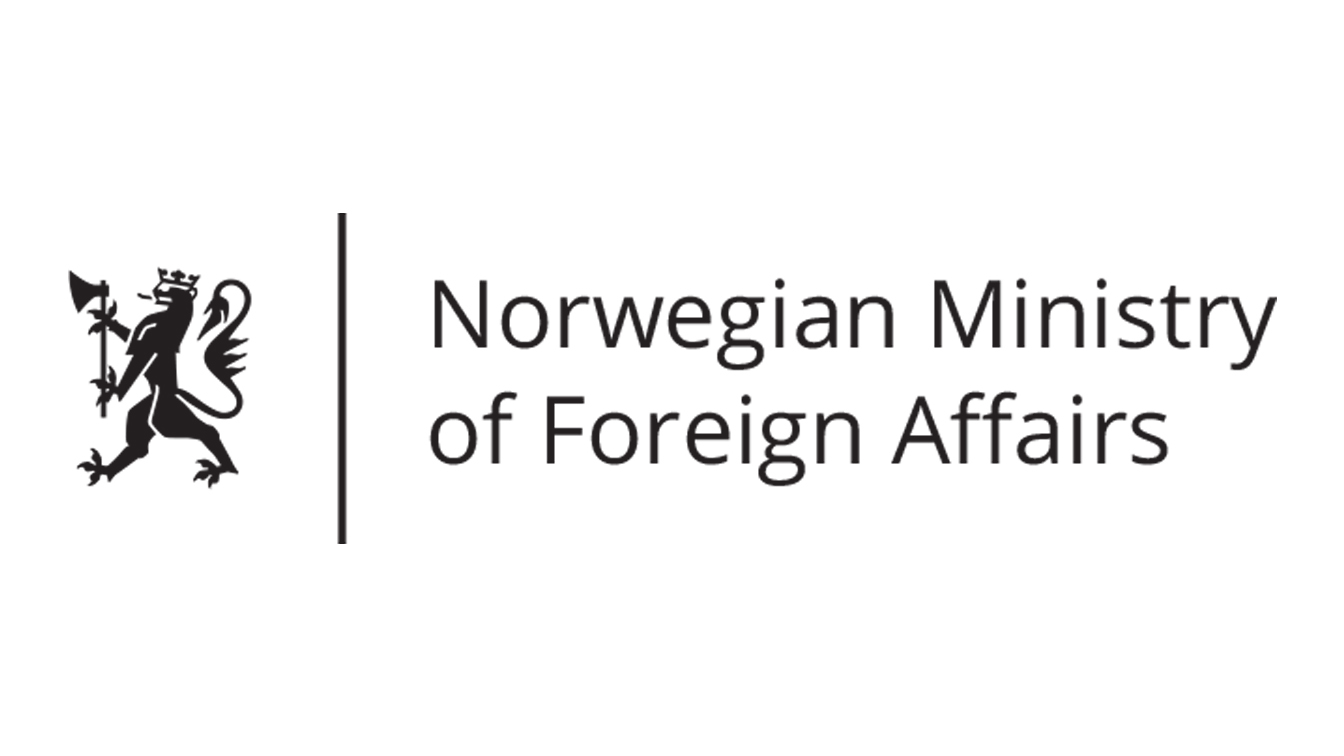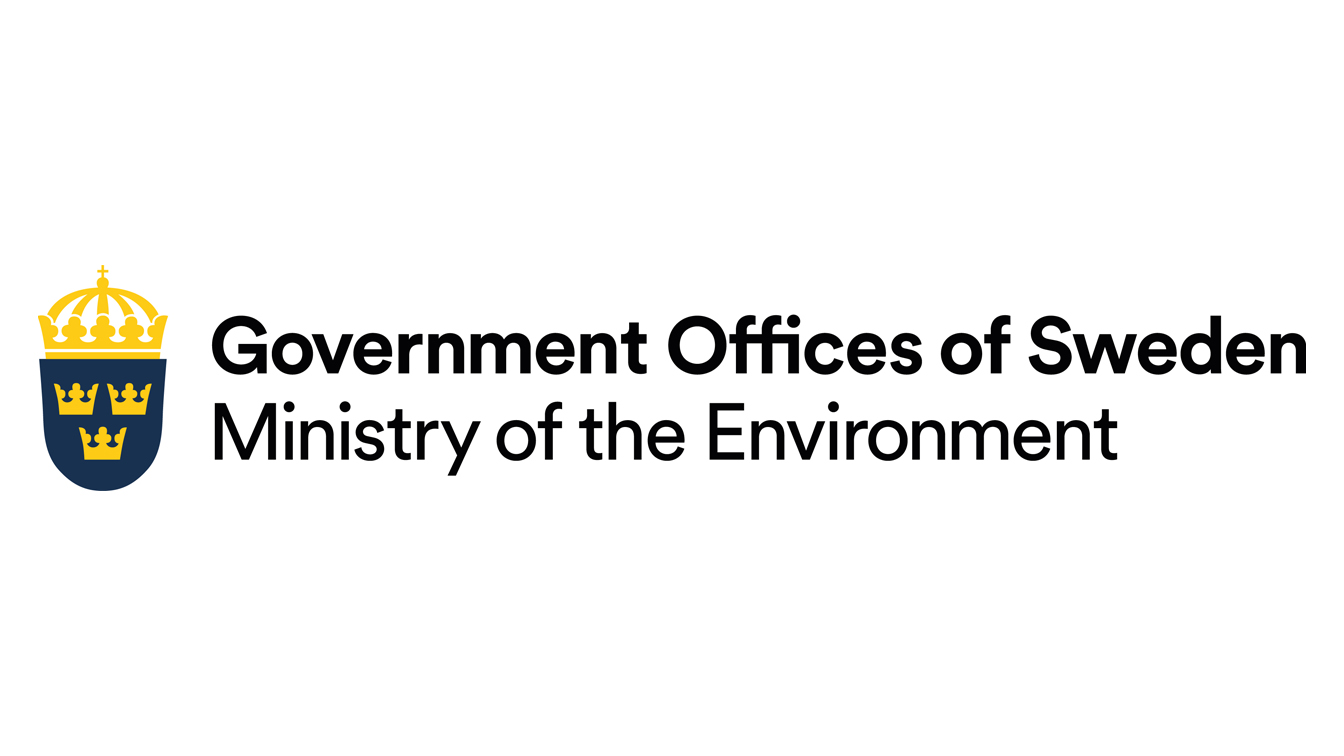Doing More with Less: Ensuring Sustainable Consumption and Production
Still Only One Earth: Lessons from 50 years of UN sustainable development policy
Ensuring sustainable consumption and production patterns has been one of the greatest global challenges over the past fifty years. With the adoption of Sustainable Development Goal 12, “Ensure sustainable consumption and production,” and rising interest in the circular economy model, there is an opportunity to set systems-wide goals for all societies, recognizing that key drivers and solutions lie in our economic, financial and governance decision-making. (Download PDF) (See all policy briefs) (Subscribe to ENB)
Every year, about one third of all food produced—about 1.3 billion tonnes—is wasted while 1 billion people remain undernourished and another 1 billion go to bed hungry. Households consume 29% of global energy contributing to 21% of carbon dioxide emissions (UNEP, 2020), pointing to the significant linkage between sustainable consumption and production (SCP) and the climate change challenge of ensuring access to renewable energy and the regulation of building standards to reflect best practice in green architecture.
A family in the Global North throws away an average of 30 kg of clothing each year. Only 15% is recycled or donated, and the rest goes directly to the landfill or is incinerated. Every year, 70 million trees in endangered and ancient forests are cut down and replaced by plantations of trees used to make wood-based fabrics, such as rayon, viscose, and modal (Sustain Your Style, 2020).
Sustainable consumption and production: The use of services and related products, which respond to basic needs and bring a better quality of life while minimizing the use of natural resources and toxic materials as well as the emissions of waste and pollutants over the life cycle of the service or product so as not to jeopardise the need of future generations.
Should the global population reach 9.6 billion by 2050, the equivalent of almost three planets would be required to provide the natural resources needed to sustain current lifestyles (UNEP, 2020). Ensuring SCP has been one of the greatest global challenges over the past fifty years.
Evolution of the “Sustainable Consumption and Production” Theme at the UN
Declarations and plans to take responsibility for sustainable consumption and production patterns have been part and parcel of the United Nations cycle of sustainable development conferences stretching back to the 1972 UN Conference on the Human Environment in Stockholm. The conferences continue trying to respond to scientific and civil society demands to recognize “Spaceship Earth” (Fuller, 1968; Ward, 1966) is a closed system with limited capacity to fuel economic growth and absorb its by-products, including pollution and greenhouse gases.
A ground-breaking initiative came in 1972 with the publication of the report, Limits to Growth, by a network of scientists and industrialists known as the Club of Rome (Meadows et. al., 1972). They commissioned the Massachusetts Institute of Technology to use computer simulations to dramatically demonstrate the futility of the human race we cannot win: the race between our capacity to sustain static stocks of resources and satisfy geometric growth rates in population and consumption.
Arguments for restraints in consumption and a steady-state economy followed with Herman Daly’s Toward a Steady-State Economy (1973). This swell of concern had little impact on mainstream debates until 1987 and the publication of the World Commission on Sustainable Development’s report, Our Common Future (Brundtland Commission report). This report stressed that meeting essential human needs requires not only a new era of economic growth for nations where the majority remain in poverty, but an assurance that those living in poverty get their fair share of the resources. Equally, the report called on the affluent to adopt lifestyles within the planet’s ecological means. It has become increasingly well understood that economic growth as an ideology has been used to disguise and defer tackling the persistent problem of inequality.
Sustainable global development requires that those who are more affluent adopt life-styles within the planet's ecological means—in their use of energy, for example... sustainable development can only be pursued if population size and growth are in harmony with the changing productive potential of the ecosystem.
Five years later, the 1992 United Nations Conference on Environment and Development (Earth Summit) adopted the Rio Declaration on Environment and Development, which called on states to reduce and eliminate unsustainable patterns of production and consumption. After another ten years, the World Summit on Sustainable Development convened in Johannesburg, South Africa, and called for fundamental changes in the way societies produce and consume. This call was accompanied by a mandate for a ten-year framework of programmes (10YFP) to support regional and national initiatives to accelerate the shift toward SCP. This mandate was developed through what was known as the Marrakech Process, launched in 2003, which led to the adoption of the Framework at the 2012 UN Conference on Sustainable Development (Rio+20).
In 2015, the UN adopted the 2030 Agenda for Sustainable Development and its 17 Sustainable Development Goals (SDGs), which aim to end poverty and set the world on a path to peace, prosperity, and opportunity on a healthy planet. SDG 12, “Ensure sustainable consumption and production patterns,” links worldwide consumption and production—a driving force of the global economy—to the use of the natural environment and resources in a way that has destructive impacts on the planet.
Yet with all this attention, the Sustainable Development Goals Report 2020 warned the global material footprint is increasing faster than population growth and economic output. It also notes how improvements in resource efficiency in some countries are offset by increases in intensity in others. Fossil fuel subsidies are also cited as a serious concern, as is the high proportion of food waste lost in long supply chains.
Despite decades of multilateral commitments, the world’s reliance on natural resources has accelerated. The SDG Report 2020 observes the material footprint (primary materials required to meet basic needs for food, clothing, water, shelter, infrastructure and other aspects of life) grew from 73.2 billion metric tons in 2010 to 85.9 billion metric tons in 2017, a 17.4% increase in just seven years. In addition, while 79 countries and the European Union reported on at least one national policy instrument contributing to the implementation of the 10YFP between 2017 and 2019, only 10% of all policies reported in 2019 related to economic and financial instruments, reflecting a limited operationalization of the 10YFP vision.
A shift has taken place in the UN discourse on SCP. While the Brundtland Commission focused on inter-generational equity, consumption volumes, and norms, and made an important distinction between addressing justified universal human “needs” and the “felt wants” of elite consuming classes, the language has changed. Now there is a different and more business-friendly focus on innovation and design in methods of production. This has steered the conversation away from norms and new regulations, enshrining the belief that economic growth can be decoupled from environmental degradation and resource depletion (Gasper et al., 2019, p.84) and created a significant blind spot around the role of corporate power to manufacture desire and elite consumer demands using ever more refined tools in the service of the attention economy.
Sustainable Consumption and Production Timeline
|
1972 |
The Club of Rome report, Limits to Growth | Highlights the contradiction between static stocks of resources and growth in population and consumption |
|
1972 |
UN Conference on the Human Environment (Stockholm, Sweden) | Recognizes the Earth's resources are finite and its capacity to re-absorb the by-products of production processes is limited. |
|
1973 |
Herman Daly, Toward a Steady-State Economy | Calls for a steady-state economy, entailing stabilized population and per capita consumption. |
|
1987 |
World Commission on Environment and Development report, Our Common Future | Distinguishes between human needs and felt wants; highlights an imbalance between the consumption patterns of the wealthy and the poor. |
|
1992 |
UN Conference on Environment and Development (Rio de Janeiro, Brazil) | Recognizes unsustainable patterns of consumption and production as a major cause of continued deterioration of the global environment. |
|
1994 |
Oslo Symposium on Sustainable Consumption (Oslo, Norway) | Provides what would become an authoritative definition of SCP. |
|
2002 |
World Summit on Sustainable Development (Johannesburg, South Africa) | Calls for the development of a 10YFP to accelerate the shift towards SCP and promote social and economic development within the carrying capacity of ecosystems by de-linking growth from environmental degradation. |
|
2003 |
First meeting of the Marrakech Process, a global multi-stakeholder platform to develop the 10YFP (Marrakech, Morocco) | The United Nations Environment Programme (UNEP) and the UN Department of Economic and Social Affairs (DESA) lead the development of the 10YFP. |
|
2012 |
World Summit on Sustainable Development (Rio de Janeiro, Brazil) | Calls for a set of SDGs. The Summit also adopted the 10YFP as part of a global commitment to accelerate the shift towards SCP in developed and developing countries. |
|
2015 |
UN Sustainable Development Summit (New York, US) | Adopts “Transforming Our World: The 2030 Agenda for Sustainable Development” and its 17 SDGs, including SDG 12 “Ensuring sustainable consumption and production.” |
Key Debates about the UN Approach and Conceptual Developments
The fundamental terms of reference for the institutional debates on SCP can be traced back to a challenge to dominant assumptions in neo-classical economic theories that depend on notions of infinite growth and a planet without ecological boundaries. These early debates are populated by a colourful cast of pioneering thinkers and campaigners, notably Andre Gorz, Herman Daly, and Serge Latouche. They have their counterparts today in figures such as Kate Raworth, the author of Doughnut Economics, and the thought leaders on sustainable prosperity and growth, Tim Jackson and Peter Victor. None issued a more formative challenge than Nicholas Georgescu-Roegen, the intellectual pioneer of ecological economics and bioeconomics. In his Entropy Law and the Economic Process (1971), Georgescu-Roegen performed for economics the intellectual equivalent of colliding two high-energy particle beams at the speed of light. He did this by bringing physics and the natural sciences into a conversation (or collision) with conventional economics. His writing exposed how the fundamental aim of economic activity—the unlimited growth of production and consumption based on finite sources of matter/energy—is incompatible with the laws of nature. His key contributions to the laws of energy conversion, including the concept of “entropy,” explain the degradation of those vital qualities of matter/energy that make them valuable for production and consumption, namely concentration and organization. Matter and energy degradation is countered by a constant inflow of solar energy and other renewable sources of heat and tidal momentum, which explains the current global transition to new sources of energy infrastructure.
Georgescu-Roegen’s ideas helped give rise to the degrowth movement—at first focused in the 1970s on resource limits, then re-emerging in the 2000s as a fundamental assault on what Serge Latouche and others have described as the “oxymoron” concept of “sustainable development.” The degrowth movement is also associated with the birth of political ecology and attempts to re-locate our environmental challenges within dominant institutional and cultural ideas, including capitalism. Advocates call for the decolonization of public debate and the abolition of economic growth as a primary social objective. Instead, they support alternative social practices of sharing, simplicity, conviviality, care, and commoning that are consistent with equitable downscaling of production and consumption, leading to a reduced societal throughput of energy and raw materials. These practices are pursued in new forms of collaborative consumption and ecovillage communities.
SDG 12–Toward a Systems Approach?
The SCP concept is prominently recognized in the 2030 Agenda. SDG 12 recognizes production and consumption habits are at the root of the planet’s sustainability problems and places them at the centre of the sustainable development agenda. Implementation of SDG 12 is linked to the achievement of overall development plans, the reduction of future economic, environmental, and social costs, strengthening economic competitiveness, and the reduction of poverty.
The SDG 12 targets cover a full range of issues, including:
- 12.1: Implement the 10YFP
- 12.2: Sustainable management and use of natural resources
- 12.3: Halve global per capita food waste
- 12.4: Responsible management of chemicals and waste
- 12.5: Substantially reduce waste generation
- 12.6: Encourage companies to adopt sustainable practices and sustainability reporting
- 12.7: Promote sustainable public procurement practices
- 12.8: Promote universal understanding of sustainable lifestyles
- 12.A: Support developing countries’ scientific and technological capacity for SCP
- 12.B: Develop and implement tools to monitor sustainable tourism
- 12.C: Remove market distortions that encourage wasteful consumption
At the second session of the United Nations Environment Assembly in 2016, the International Resource Panel was mandated to prepare a report, Assessing Global Resource Use: A systems approach to resource efficiency and pollution reduction (2017). The Panel identified decoupling economic activity and human well-being from resource use as an imperative. The report highlighted the complex linkages between human well-being, economic prosperity, and environmental resilience and the need for policy makers to act across all three domains to bring about transformative outcomes.
Adopting a systems approach, the Panel asserted that improving the well-being of people while minimizing resource use and environmental impacts, in particular through enhanced resource efficiency, is necessary to deliver SDG 12 as well as the other SDGs. To achieve this, the Panel supported the transformation of today’s “linear” material flows—from extraction to use and disposal—to become “circular” through intelligent design of products that incorporates standardization, reuse, recycling, remanufacturing, the development of efficient and inclusive infrastructure, and a new focus on the delivery of services rather than the sale of material products.
Sustainable Consumption and COVID-19
In his introduction to the SDG Report 2020, UN Secretary-General António Guterres observed the root causes and uneven impacts of COVID-19 have demonstrated why we need the 2030 Agenda. He noted the pandemic has underscored the urgency of implementation and has called for an international response and recovery effort guided by the SDGs. The pandemic has prompted similar responses across the world, notably among advocates of a transformation of economic priorities so that public health and well-being are placed more centrally at the heart of government priorities.
Far from undermining the case for the SDGs, the root causes and uneven impacts of COVID-19 demonstrate precisely why we need the 2030 Agenda…
A European research and advocacy initiative, the Foundational Economy, is developing new ways to think about economic policy, placing a focus on healthcare, education, housing, and the food supply. In their manifesto, the organization explains that the well-being of citizens in current and future generations depends less on individual [private] consumption and more on their social consumption of essential goods and services. The distinctive, primary role of public policy should therefore be to secure the supply of basic goods and services in a socially responsible way, and not boost private consumption to deliver economic growth.
Similar arguments have been advanced by a worldwide movement advocating government prioritization of well-being and well-being indicators to help steer qualitative and inclusive economic growth, as a replacement or complement to gross domestic product (GDP).
What Future Do We Want?
Both the climate emergency and the COVID-19 pandemic have accelerated public and governmental understanding of the need to shift our economic paradigm, with calls for “building back better” acknowledging there can be no wholesale retreat to the old economic order. Inspired by Franklin D. Roosevelt’s “New Deal” in response to the Great Depression in the United States in the early 1930s, proposals for green new deals have proliferated in response to climate change and the COVID-19 pandemic.
The most useful measures of progress toward SCP, however, will not be found in the indicator set used to monitor the progress of the SDGs. The key indicator to look for is a shift from a downstream focus on the re-design of private or corporate production and consumption to an upstream focus on the fundamental drivers of national and international economic priorities. Rather than treating markets, for example, as free-standing entities subject to occasional regulatory intrusions, markets must be regarded once again as outcomes of a social process amenable to democratic decision-making. This must accompany a wholesale shift in how society approaches the core question of what it values and whether we are prepared to continue to allow market exchange and pricing mechanisms a privileged status in determining what is to be valued, produced, and consumed. Until this macro-level economic debate on value is resolved in favour of equality and socio-ecological regeneration it will be difficult to see how market and pricing mechanisms applied to biodiversity, forests, and land can produce long-term shifts in consumption practices.
The economist Mariana Mazzucato is making waves with her powerful calls for a green revolution founded on deliberate and conscious changes in social values: a redirection of the entire economy, transforming production, distribution, and consumption in all sectors in favour of the common good. She has called for the concept of “value” to find its rightful place at the centre of economic reasoning if we are to meaningfully respond to the question: “What future do we want?” To paraphrase Oscar Wilde, the future cannot be left in the hands of cynics—or economists—who know the price of everything and the value of nothing.
Works Consulted
Botsman, R. (2012). Trusting in strangers. TedGlobal2012. Edinburgh, Scotland. https://www.ted.com/talks/rachel_botsman_the_currency_of_the_new_economy_is_trust/transcript?language=en
Daly, H. (1973). Toward a steady-state economy. W.H. Freeman.
D’Alisa, G., Demaria, F., & Kallis, G. (2015). Degrowth: A vocabulary for a new era. Routledge.
Doran, P. (2017). A political economy of attention, mindfulness and consumerism. Routledge.
Fuller, R.B. (1968). Operating manual for Spaceship Earth. https://designsciencelab.com/resources/OperatingManual_BF.pdf
Gasper, D., Shah, A., & Tankha, S. (2019). The framing of sustainable consumption and production in SDG12. Global Policy, 10, Supplement 1: 83-93.
Georgescu-Roegen, N. (1971). Entropy law and the economic process. Harvard University Press.
Jackson, T. (2018). The post-growth challenge: Secular stagnation, inequality and the limits to growth. CUSP Working Paper 12. University of Surrey.
Jackson, T., & Webster, R. (2016). Limits revisited – A review of the limits to growth debate. Centre for the Understanding of Sustainable Prosperity. DOI: 10.13140/RG.2.2.21095.91045
Mazzucato, M. (2018). The value of everything: Making and taking in the global economy. Penguin.
Meadows, D.H., et al. (1972). The limits to growth: A report for the Club of Rome’s project on the predicament of mankind. Universe Books.
One Planet Network. (2017). One plan for one planet: 5 year strategy 2018-2022. https://spaces.oneplanetnetwork.org/system/files/strategy_one_planet.pdf
Organisation for Economic Co-operation and Development. (2008). Promoting sustainable consumption: Good practices in OECD countries. https://www.oecd.org/greengrowth/40317373.pdf
Rayworth, K. (2017). Doughnut economics: Seven ways to think Like a 21st century economist. Chelsea Green Publishing.
Sustain Your Style. (2020). Fashion’s environmental impacts. https://www.sustainyourstyle.org/en/environmental-impacts
Sustainable Development Solutions Network. (2020). World happiness report. https://worldhappiness.report/ed/2020/
United Nations Environment Programme Resource Panel. (2017). Summary for policymakers – Assessing global resource use: A systems approach to resource efficiency and pollution reduction. https://www.resourcepanel.org/reports/assessing-global-resource-use
United Nations Environment Programme. (2020). GOAL 12: Sustainable consumption and production. https://www.unenvironment.org/explore-topics/sustainable-development-goals/why-do-sustainable-development-goals-matter/goal-12
Ward, B. (1966). Spaceship Earth. Columbia University Press.
Additional downloads
You might also be interested in
Unlocking Supply Chains for Localizing Electric Vehicle Battery Production in India
This study aims to highlight the key supply chain barriers in localizing electric vehicle (EV) battery cell manufacturing in India. It summarizes consultations with 12 companies, as well as experts and policy-makers, to determine the crucial challenges and opportunities in localizing battery manufacturing in India.
How to Regulate Our Waste-Full World
Going forward, the legitimacy of global governance of hazardous wastes may rest on its ability to enable governments protect the most vulnerable.
December 2024 | Carbon Minefields Oil and Gas Exploration Monitor
In November 2024, 23 oil and gas exploration licences were awarded across five countries, with Russia granting the licences that account for the largest portion of embodied emissions.
Agreement on Climate Change, Trade and Sustainability: A landmark pact for trade and sustainability
The ACCTS pact, signed by Costa Rica, Iceland, New Zealand, and Switzerland, aligns trade and environmental policies, tackling fossil fuel subsidies, eco-labels, and green trade.



